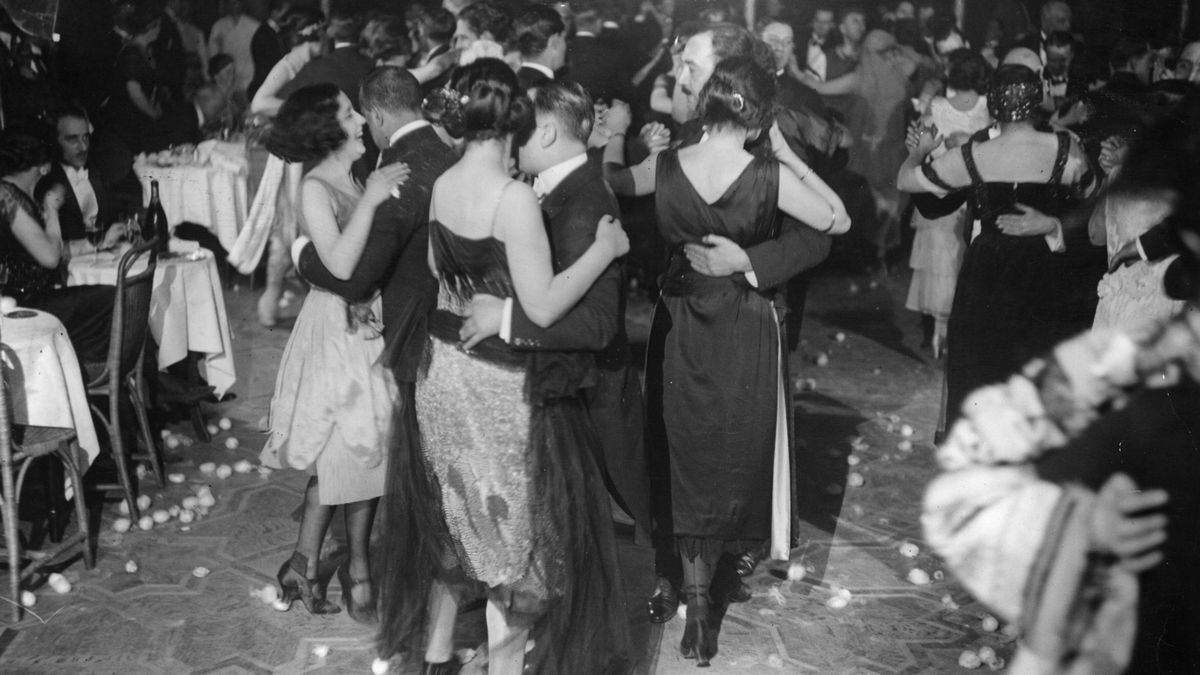
The Roaring Twenties was a decade of dramatic social and political change. But what made this era so unique? Jazz music, flapper culture, and Prohibition are just the tip of the iceberg. Imagine a time when speakeasies flourished, and silent films captivated audiences. This period saw the rise of consumerism, with people buying radios, cars, and household appliances like never before. Women gained the right to vote, and African American culture blossomed during the Harlem Renaissance. The stock market soared, leading to unprecedented economic growth. Yet, beneath the glitz and glamour, there were also struggles and inequalities. Ready to dive into 38 fascinating facts about this transformative decade? Buckle up, because the Roaring Twenties was anything but ordinary!
Key Takeaways:
- The Roaring Twenties was a vibrant era of change, from jazz music to flapper fashion. It also saw the rise of consumer culture and the birth of modern technology, shaping the world we live in today.
- The economic boom of the Roaring Twenties led to the Great Depression, but it also brought about significant advancements in technology and culture that continue to impact our lives.
The Roaring Twenties: A Time of Change
The Roaring Twenties, also known as the Jazz Age, was a decade of great social, cultural, and economic change. This period saw the rise of new music, fashion, and lifestyles that continue to influence us today. Let's dive into some fascinating facts about this vibrant era.
-
The 1920s saw the birth of jazz music, which became wildly popular and led to the Jazz Age. Musicians like Louis Armstrong and Duke Ellington became household names.
-
Flappers were the fashion icons of the 1920s. These young women wore short skirts, bobbed their hair, and defied social norms with their bold behavior.
-
Prohibition, which banned the sale of alcohol, was in effect from 1920 to 1933. This led to the rise of speakeasies, secret bars where people could drink illegally.
-
The 19th Amendment, granting women the right to vote, was ratified in 1920. This was a significant milestone in the fight for gender equality.
-
The Harlem Renaissance was a cultural movement that celebrated African American art, literature, and music. It was centered in the Harlem neighborhood of New York City.
-
The first commercial radio station, KDKA, began broadcasting in 1920. Radio quickly became a popular form of entertainment and information.
-
The 1920s saw the rise of Hollywood and the film industry. Silent films were popular, and stars like Charlie Chaplin and Mary Pickford became famous.
-
The stock market experienced unprecedented growth during the 1920s, leading to a period of economic prosperity known as the "Roaring Twenties."
-
The automobile became more affordable and accessible, thanks to Henry Ford's assembly line production. This revolutionized transportation and American society.
-
The 1920s were a time of technological innovation. Inventions like the washing machine, refrigerator, and vacuum cleaner made life easier for many people.
Social and Cultural Shifts
The Roaring Twenties were marked by significant social and cultural shifts. People began to challenge traditional norms and embrace new ways of thinking and living.
-
The Lost Generation was a group of American writers who were disillusioned by World War I and the materialism of the 1920s. Authors like Ernest Hemingway and F. Scott Fitzgerald captured the spirit of the era in their works.
-
Dance crazes like the Charleston and the Lindy Hop became popular. These energetic dances reflected the carefree spirit of the times.
-
The Scopes Trial, also known as the "Monkey Trial," took place in 1925. It was a landmark case that debated the teaching of evolution in schools.
-
The Ku Klux Klan experienced a resurgence during the 1920s, promoting white supremacy and targeting African Americans, immigrants, and other minority groups.
-
The 1920s saw the rise of consumer culture. Advertising became more sophisticated, and people began to buy goods on credit.
-
The first Miss America pageant was held in 1921. This event reflected the changing standards of beauty and femininity.
-
The 1920s were a time of sexual liberation. Sigmund Freud's theories on sexuality influenced people's attitudes toward sex and relationships.
-
The Great Migration saw millions of African Americans move from the rural South to urban areas in the North, seeking better opportunities and escaping racial discrimination.
-
The 1920s were a time of artistic experimentation. Surrealism, Art Deco, and other modernist movements emerged, challenging traditional artistic conventions.
-
The 1920s saw the rise of organized crime. Gangsters like Al Capone became infamous for their involvement in bootlegging and other illegal activities.
Economic Boom and Bust
The Roaring Twenties were a time of economic prosperity, but this period also set the stage for the Great Depression. Let's explore some key economic facts from this era.
-
The stock market crash of 1929 marked the end of the Roaring Twenties and the beginning of the Great Depression. Many people lost their savings and jobs.
-
The 1920s saw a boom in the construction industry. Skyscrapers like the Empire State Building and the Chrysler Building were built during this time.
-
The Federal Reserve was established in 1913, but it played a crucial role in the economic policies of the 1920s. Its actions influenced the boom and bust cycle of the decade.
-
The 1920s saw the rise of installment buying, where consumers could purchase goods on credit and pay for them over time. This fueled consumer spending.
-
The agricultural sector struggled during the 1920s. Farmers faced low crop prices and high debt, which contributed to the economic difficulties of the Great Depression.
-
The 1920s saw the rise of multinational corporations. Companies like General Motors and IBM expanded their operations globally.
-
The 1920s were a time of labor unrest. Strikes and labor disputes were common as workers fought for better wages and working conditions.
-
The 1920s saw the rise of advertising agencies. Companies like J. Walter Thompson and BBDO created innovative ad campaigns that shaped consumer culture.
-
The 1920s saw the rise of the middle class. Many people experienced increased incomes and improved standards of living.
-
The 1920s saw the rise of the stock market as a popular investment. Many people invested in stocks, hoping to get rich quickly.
Technological Innovations
The Roaring Twenties were a time of rapid technological advancements. These innovations transformed everyday life and laid the foundation for future progress.
-
The first transatlantic flight was completed by Charles Lindbergh in 1927. His solo journey from New York to Paris made him an international hero.
-
The 1920s saw the development of the first television. Although it wouldn't become widespread until later, this invention revolutionized entertainment and communication.
-
The 1920s saw the rise of the telephone. More households had access to this technology, making communication easier and faster.
-
The 1920s saw the development of the first commercial airlines. Companies like Pan American Airways began offering passenger flights.
-
The 1920s saw the rise of the automobile industry. Cars became more affordable, and road infrastructure improved, changing the way people traveled.
-
The 1920s saw the development of the first electric traffic lights. These innovations improved road safety and traffic management.
-
The 1920s saw the rise of the radio industry. Radio stations broadcast news, music, and entertainment to a wide audience.
-
The 1920s saw the development of the first talking films. The 1927 film "The Jazz Singer" was the first feature-length movie with synchronized dialogue, marking the end of the silent film era.
The Roaring Twenties in a Nutshell
The Roaring Twenties was a time of unprecedented change and innovation. Jazz music, flapper fashion, and the Harlem Renaissance defined the era's cultural landscape. Prohibition led to the rise of speakeasies and organized crime. Technological advancements like the automobile and radio transformed daily life. Women gained the right to vote, marking a significant step toward gender equality. The stock market boom created a sense of economic prosperity, though it ended with the Great Depression.
Understanding this decade helps us appreciate the rapid social and technological changes that shaped modern society. The Roaring Twenties wasn't just about glitz and glamour; it was a period of profound transformation. From cultural revolutions to economic shifts, this era left an indelible mark on history. So, next time you hear a jazz tune or see a vintage car, remember the vibrant spirit of the 1920s.
Frequently Asked Questions
Was this page helpful?
Our commitment to delivering trustworthy and engaging content is at the heart of what we do. Each fact on our site is contributed by real users like you, bringing a wealth of diverse insights and information. To ensure the highest standards of accuracy and reliability, our dedicated editors meticulously review each submission. This process guarantees that the facts we share are not only fascinating but also credible. Trust in our commitment to quality and authenticity as you explore and learn with us.


